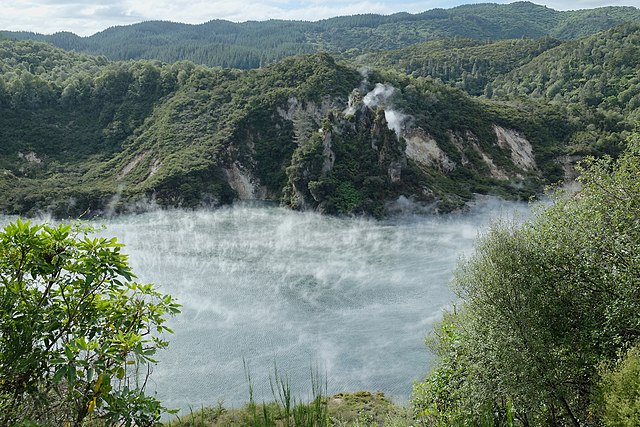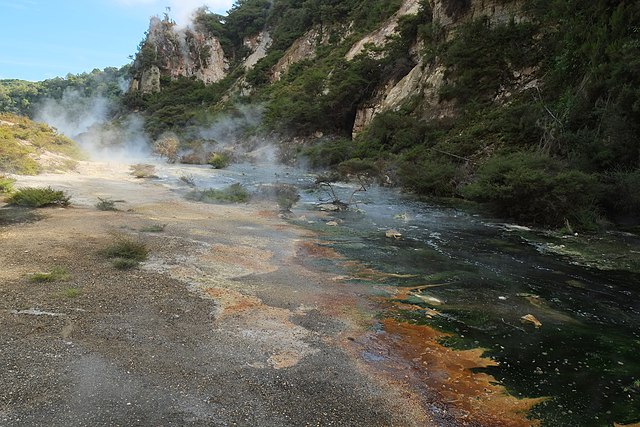Waimangu Volcanic Rift Valley
The Waimangu Volcanic Rift Valley is the hydrothermal system created on 10 June 1886 by the volcanic eruption of Mount Tarawera, on the North Island of New Zealand. It encompasses Lake Rotomahana, the site of the Pink and White Terraces, as well as the location of the Waimangu Geyser, which was active from 1900 to 1904. The area has been increasingly accessible as a tourist attraction and contains Frying Pan Lake, which is the largest hot spring in the world, and the steaming and usually pale blue Inferno Crater Lake, the largest geyser-like feature in the world although the geyser itself cannot be seen since it plays at the bottom of the lake.
Frying Pan Lake and Cathedral Rocks
Thermal activity on the shore of Lake Rotomahana, near the former site of the Pink Terrace
Frying Pan Lake overflow stream
Bird's Nest Spring
1886 eruption of Mount Tarawera
The 1886 eruption of Mount Tarawera was a violent volcanic eruption that occurred in the early hours of 10 June 1886 at Mount Tarawera, near Rotorua on New Zealand's North Island. The eruption reached an estimated volcanic explosivity index (VEI) of 5 and killed an estimated 120 people, making it the largest and deadliest in New Zealand during the past 500 years, a period that includes the entirety of European history in New Zealand.
Mount Tarawera in Eruption by Charles Blomfield
The Phantom Canoe: A Legend of Lake Tarawera, oil on canvas by Kennett Watkins
Te Wairoa, "The Buried Village"
Site of Waimangu Geyser in the newly-formed rift valley, around 1910








